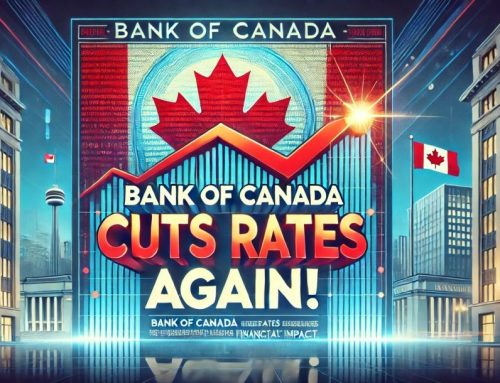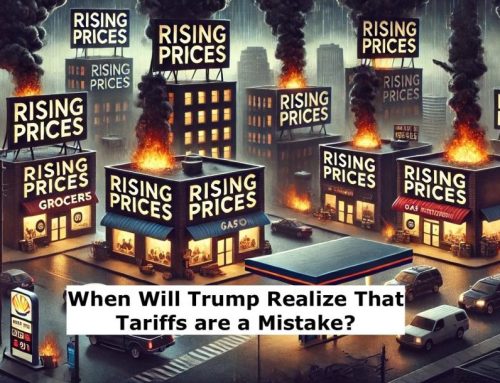One of the most common questions people as me is whether it’s better to take fixed or variable rate mortgage. Many mortgage professionals, along with many borrowers will suggest choosing variable every time. While it’s true that variable rate mortgages have been the clear winner in over 80% of situations over the past 30 years, there is still that remaining 20% where variable would have lost out to fixed. This is why I disagree with choosing a variable rate mortgage 100% of the time, regardless of the circumstances. There are times to choose variable, and there are times to choose fixed. Suggesting to choose a variable rate mortgage 100% of the time for all borrows is bad advice.
Why?
There are two major points to consider before choosing fixed or variable.
Risk Tolerance
There are many who cannot handle the uncertainty surrounding their rate and payment. With variable, your rate and payment could change at any time. Having a steady rate and payment for the length of the term is an attractive feature for many as it gives them a sense of comfort and certainty. If you are the type who feels anxiety that the mere thought of your rate and payment increasing, then fixed rate may be the better choice.
Spread
The spread between fixed and variable is something that deserves major consideration. Right now, spreads are extremely thin. The lowest 5 year fixed rate on an insurable mortgage* right now is as low as 2.74%*, or 5 year variable at prime -1.25% (2.70%)*. This is a spread of only 0.04%. Pretty close to an identical rate. Except one is locked in for 5 years, and the other will float up and down with prime rate.
For an uninsurable mortgage**, the lowest 5 year fixed rate is 3.04%. The lowest 5 year variable is prime -0.75% (3.20%). In this case, the rate on the fixed is lower! This is quite rare, but not unprecedented.
This gives you zero rate protection against rising rates. That being said, chances are strong that the next movement on prime rate will be down, which could come as soon as the next rate announcement from the Bank of Canada expected on May 29th. If not, then it’s likely that it will happen with the following announcement on July 10th. It’s also quite likely that prime rate will remain low for at least the next couple of years, which is also a major point to consider.
So as long as the rate is expected to remain low for the next couple of years, and since it will likely drop, variable would be a good choice, right?
I would not be so quick to come to that conclusion. This is all speculation and is the likely scenario. However, that does not mean that this is guaranteed to happen, and leading economists can be wrong. Back in the fall of 2018, it was predicted that prime rate would increase 2-3 times in 2019. In early 2019, they did a complete 180 on that prediction. All is speculation. While the short term outlook is for prime rate to decrease, the long term outlook is the opposite. Once prime rate starts increasing again, it can increase fast, as anyone with a variable rate mortgage between July 2017 and October 2018 can attest to. A period where we saw five increases without a single decrease.
Does this mean everyone should take a fixed rate?
While fixed rates will make the most sense for the majority of homeowners at this time, there are still some situations were variable might make sense. If you think there is a high probability of you breaking your mortgage within the next two years, then variable may be the better choice. Even though the spread is thin, chances are low that we will see an increase to prime rate over the next year or two, and likely, the prime rate will drop during this period. The penalty to break a variable rate mortgage is also only 3 months interest (with the odd exception), compared to fixed rate mortgages being the higher of three months interest or the interest rate differential (IRD).
While all variable rate mortgages allow you to lock into a fixed rate at any time without cost, I’ll typically recommend remaining in your variable rate for the entire term. In this situation, I’ll sing a different tune, however. Choosing a variable rate with the intention of converting to fixed after a year or two is a strategy that could potentially work for some. Of course, it can still be a risky move, as you would be relying on speculation. Also, the fixed rate that your lender would lock you in at is seldom going to be as low as the rate you would get if you were getting a new mortgage from them at that time.
This is something that could potentially work, but as mentioned, it’s risky and something I would advise against for most borrowers.
*An insurable mortgage must have a property value under $1 million OR you must have purchased before November 30th, 2016. There must be 35% or greater equity OR mortgage must be insured (CMHC).
**An uninsurable mortgage is one on a property valued at over $1 million, or with an amortization of more than 25 years (max 30).








https://waterfallmagazine.com
Hello There. I found your blog using msn. This is a
really well written article. I’ll be sure to bookmark it and return to read more of your
useful info. Thanks for the post. I’ll definitely comeback.